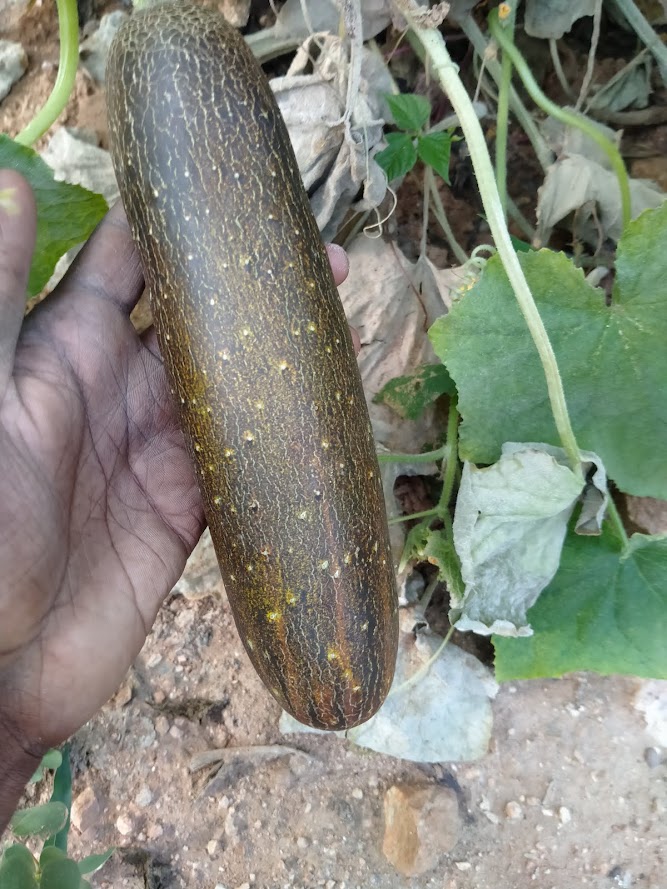Here is an article on how to grow foxtail millet.
Common name: Kakun
Vernacular Names: Foxtail millet (English), Kangni (Hindi), Navane (Kannada), Thinai (Tamil), Kang (Gujarati) and Rala (Marathi).
Family: Gramineae
Introduction: Fox tail is also known as Italian millet, and German millet. It is generally grown as a rainfed crop in India. It has an erect leafy stem that grow 60-75 cm tall and bend quite a bit at maturity due to heavy weight of earhead. Foxtail grain contains 10% to 12% Protein, 4.7% fat, 60.6 % carbohydrates 2.29% to 2.7% Lysine and 0.59 (mg) Thiamin.
Climate and soil: Foxtail can be grown in tropics as well as temperate regions both under low and moderate rainfall. The crop can be grown even at an altitude of 2000 metres and 50-75 centimetre annual rainfall. Foxtail grows well on well-drained loamy soils. They will not tolerate water-logged soils or extreme drought.
Varieties:
Following are the important varieties of the crop:
Pant setaria-4, TNAU-43, HMT-100-1, SIA-326, PS-4, K-2, K-3 and Krishna devaraya.
Land Preparation: Kakun does not require much field preparation. Before the onset of monsoon the field should be ploughed once with mould board plough. With onset of monsoon the field should be harrowed or plough with local plough twice in northern India or with blade harrows in south India.
Sowing Time: Kharif- June to July
Rabi- September to October
Seed rate: 8-10 kg/ha (line sowing)
15 kg/ha (broadcasting)
Seed treatment: Seed treated with Ceresan @ 3 g/kg of seed.
Method of Sowing: Broadcasting and line sowing.
Spacing: Row to row 25-30 cm, plant to plant 8-10 cm and depth 2-3 cm.
Manures and fertilisers: The crop is usually manured with 5 to 10 t/ha FYM about a month before sowing. Generally fertilizer recommendations to get a good crop are 40 kg nitrogen, 20 kg P2O5 and 20 kg K2O per hectare. All the fertilizers should be applied as a basal dose at a time of sowing.
Water management: Kakun sown during Kharif season does not require any irrigation. However, if dry spell prevails for longer period, then first irrigation at 25-30 DAYS and second irrigation at 40-45 DAYS must be given to boost the yields.
Important weeds: Among grassy weeds, Echinochloa colonum, Enhinochloa crusgulli (sawan), Dactyloctenium aegypticum (makra), Elusine indica (kodo), Setaria glauca (banra), Cynodon dactylon (doob), Phragmites karka (narkul), Cyperus rotundus (motha), Sorghum halepanse (banchari) are common. The broad-leaved weeds are Celosia argentia (chilimil), Commelina benghalensis (kankoua), Phylanthus niruri (hulhul), Solanum nigrum (makoi) and Amaranthus viridis (chaulai).
Weed Control: Two to three weedings with hand hoe are sufficient to keep the weeds in control.Post-emergence application of 2, 4-D sodium salt (80%) @ 1.0 kg a.i./ha at 20-25 DAS. Isoproturon @ 1.0 kg a.i. /ha as pre-emergence spray is also effective in weeds control.
Diseases:
Downy mildew (Sclerospora graminicola): Diseased plants are dwarfed with excessive development of tillers. Lengthwise yellow- green streaks are seen on the leaves.
Control: Spray of 0.2% solution of Mancozeb 75 WP may help to control the disease and seed treatment is also helps in controlling the disease.
Kernel smut (Ustilago crameri) : The smut affected plants usually are stunted and the affected earheads convert into black masses.
Control: Seed treated with thiram or ceresan @ 2.5 g/kg of seed and soaking seeds in hot water at 55 oC for 7-12 minutes and the crop rotation is also helps in controlling the disease.
Insect-pests management:
Shoot fly: Apply Phorate @15 kg/ha (10% granules) in the soil at the time of field preparation or Carbofuran (Furadan) 3% granules @ 30 kg/ha in furrows or as broadcast before sowing.
Harvesting Time: The crop matures in 80-100 days. The crop is harvested when the earheads are dry, either by cutting the whole plant by sickle or the ears separately. The crop is usually harvested during Kharif season from September to October and Rabi season from January to February.
Yield: Grain-15-18 qtl/ha, Straw-20-40 qtl/ha.
Courtesy: DACFW
#foxtailmillet #cultivation #farming






















